-
 Bitcoin
Bitcoin $94,703.6762
0.95% -
 Ethereum
Ethereum $1,776.5728
-1.54% -
 Tether USDt
Tether USDt $0.9999
-0.01% -
 XRP
XRP $2.1185
-0.37% -
 BNB
BNB $598.7401
0.36% -
 Solana
Solana $143.7628
-0.40% -
 USDC
USDC $1.0000
0.00% -
 Dogecoin
Dogecoin $0.1676
-1.12% -
 TRON
TRON $0.2448
-1.86% -
 Cardano
Cardano $0.6553
-0.40% -
 Sui
Sui $3.2610
-4.83% -
 Chainlink
Chainlink $13.4597
-1.20% -
 Avalanche
Avalanche $19.7528
1.62% -
 UNUS SED LEO
UNUS SED LEO $8.7108
0.75% -
 Stellar
Stellar $0.2565
-0.79% -
 Toncoin
Toncoin $3.0129
1.33% -
 Shiba Inu
Shiba Inu $0.0...01254
-0.61% -
 Hedera
Hedera $0.1726
-0.26% -
 Bitcoin Cash
Bitcoin Cash $358.5330
2.12% -
 Hyperliquid
Hyperliquid $20.5009
2.39% -
 Litecoin
Litecoin $82.9551
-3.99% -
 Polkadot
Polkadot $3.9261
0.30% -
 Dai
Dai $1.0000
0.00% -
 Monero
Monero $286.2566
4.73% -
 Bitget Token
Bitget Token $4.2943
0.01% -
 Ethena USDe
Ethena USDe $1.0002
0.01% -
 Pi
Pi $0.5815
-1.53% -
 Pepe
Pepe $0.0...07853
-0.38% -
 Bittensor
Bittensor $363.6681
-0.17% -
 Uniswap
Uniswap $4.9063
-1.20%
Can A3S Protocol (AA) coins be mined?
The A3S Protocol (AA) blockchain utilizes a modified Proof-of-Stake (PoS) consensus mechanism, eliminating the need for energy-intensive traditional mining processes and allowing coin holders to participate in network validation through staking.
Jan 01, 2025 at 12:15 am
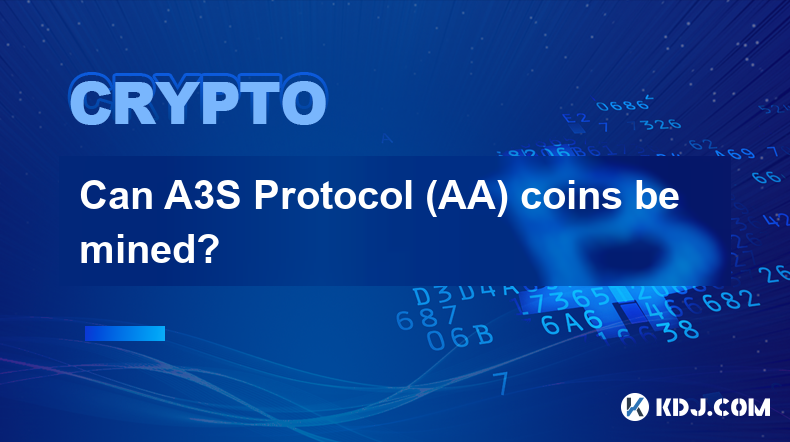
Key Points:
- Mining Process Explanation
- Proof-of-Work and Proof-of-Stake
- A3S Protocol (AA) Coin Mining and Usability
- Benefits and Considerations
- FAQs on A3S Protocol (AA) Coin Mining
A3S Protocol (AA) Coin Mining and Usability
The A3S Protocol (AA) blockchain is a decentralized platform that utilizes a modified Proof-of-Stake (PoS) consensus mechanism, eliminating the need for traditional mining. Instead, AA coin holders participate in the network's validation process by staking their coins, earning rewards for their contributions.
Unlike Bitcoin and other cryptocurrencies that rely on Proof-of-Work (PoW), which involves solving complex computational puzzles to secure the network and create new coins, the A3S Protocol leverages PoS, where coin holders stake their coins to validate transactions and create blocks. This approach offers several advantages:
- Energy Efficiency: PoS is far more energy-efficient compared to PoW, reducing the environmental impact typically associated with cryptocurrency mining.
- Reduced Hardware Costs: Participants do not require specialized mining rigs or high-performance computers, making it accessible to a broader range of users.
- Increased Participation: By eliminating the need for expensive mining equipment, PoS encourages wider participation in network validation, fostering decentralization and security.
Mining Process Explanation
Traditional cryptocurrency mining involves using powerful computers to solve complex mathematical equations. These computers compete to be the first to solve the puzzle and earn the reward for creating a new block on the blockchain. However, this process is energy-intensive and requires specialized hardware.
In contrast, PoS mining focuses on coin ownership rather than computational power. Coin holders stake their coins in designated wallets or pools, which are then used to validate transactions and create blocks. The probability of being selected as a block creator is proportional to the number of coins staked, incentivizing users to hold and participate in the network.
Benefits and Considerations
Mining and staking coins offer unique benefits and considerations:
Benefits:
- Passive Income: Coin holders can earn rewards for staking their coins, providing a potential source of passive income.
- Network Security: Staking contributes to the security and resilience of the network by incentivizing users to act honestly and participate in the validation process.
- Decentralization: PoS mining broadens participation in network validation, fostering decentralization and reducing the risk of centralization.
Considerations:
- Coin Value Fluctuation: The value of staked coins can fluctuate, affecting the rewards earned and the overall profitability of staking.
- Minimum Lock-in Periods: Some staking mechanisms impose a minimum lock-in period, restricting access to staked coins for a specified duration.
- Technical Knowledge: While PoS mining is generally simpler than PoW, it requires some technical understanding and interaction with specific software or platforms.
FAQs on A3S Protocol (AA) Coin Mining
Q: Can A3S Protocol (AA) coins be mined?
A: No, A3S Protocol (AA) coins cannot be mined through traditional mining methods like PoW. Instead, they are acquired through staking, where coin holders contribute to network validation.
Q: How can I participate in A3S Protocol (AA) coin staking?
A: You can participate in AA coin staking by holding your coins in an eligible wallet or joining a staking pool. These can be found on the A3S Protocol website or through third-party platforms.
Q: Are there any costs associated with staking AA coins?
A: Staking AA coins may involve minimal fees or charges, such as transaction fees for moving your coins to a staking wallet or pool. These fees vary depending on the platform used.
Q: What are the rewards for staking AA coins?
A: Staking AA coins allows you to earn rewards in the form of additional AA coins, typically distributed proportionally to the number of coins staked and the duration of participation.
Q: How secure is PoS mining compared to PoW?
A: PoS mining is generally considered more secure than PoW, as it disincentivizes malicious behavior and encourages network participation from coin holders with a vested interest in its success.
Disclaimer:info@kdj.com
The information provided is not trading advice. kdj.com does not assume any responsibility for any investments made based on the information provided in this article. Cryptocurrencies are highly volatile and it is highly recommended that you invest with caution after thorough research!
If you believe that the content used on this website infringes your copyright, please contact us immediately (info@kdj.com) and we will delete it promptly.
- The price of XRP has joined the bearish consolidation trend
- 2025-05-07 00:15:12
- Virtuals Protocol (VIRTUAL) is one of the hottest recovering tokens, boosting several other AI agents.
- 2025-05-07 00:15:12
- A potent mix of political showmanship and landmark regulatory proposals in the U.S. this month could be the spark for an explosive altcoin season.
- 2025-05-07 00:10:12
- DogeOS, an application development layer for the Dogecoin ecosystem, announced the successful closing of a $6.9 million funding round
- 2025-05-07 00:10:12
- Florida has withdrawn two key bills aimed at creating a state-level Bitcoin (BTC) reserve
- 2025-05-07 00:05:12
- The U.S. Treasury is set to release a pivotal report detailing the framework for establishing a national Strategic Bitcoin Reserve and a broader Digital Asset Stockpile.
- 2025-05-07 00:05:12
Related knowledge
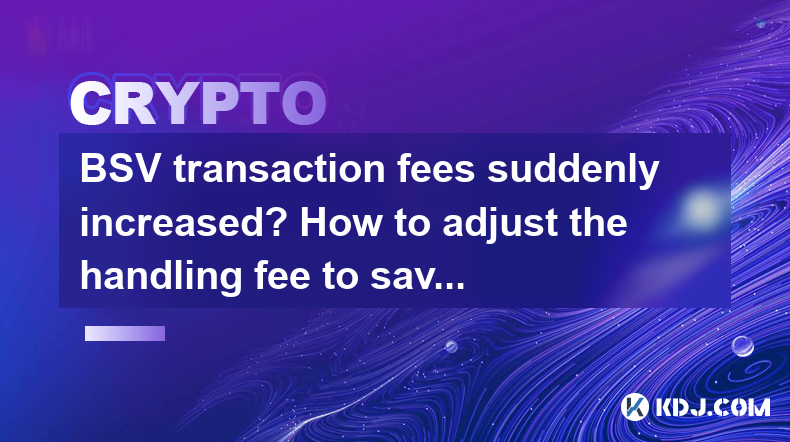
BSV transaction fees suddenly increased? How to adjust the handling fee to save costs?
May 02,2025 at 06:42am
Understanding BSV Transaction FeesBSV (Bitcoin SV) aims to fulfill the original vision of Bitcoin as a peer-to-peer electronic cash system. One of the key elements in this system is the transaction fee, which compensates miners for including transactions in the blockchain. Recently, users have noticed a sudden increase in BSV transaction fees, which can...
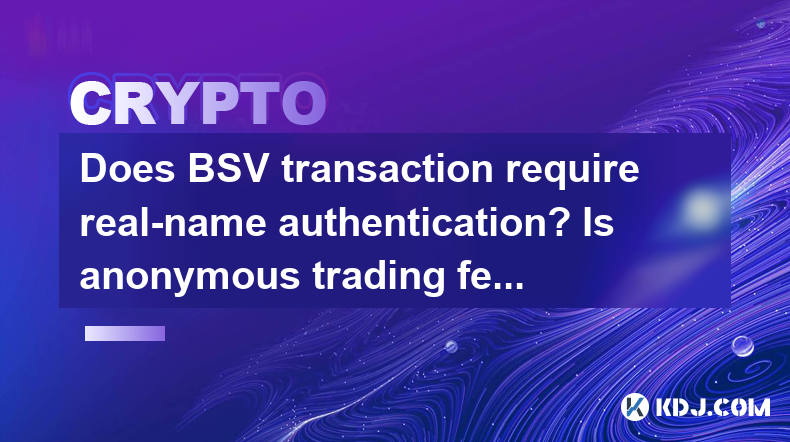
Does BSV transaction require real-name authentication? Is anonymous trading feasible?
May 03,2025 at 03:14pm
The question of whether BSV (Bitcoin SV) transactions require real-name authentication and whether anonymous trading is feasible is a complex one, deeply intertwined with the broader dynamics of cryptocurrency regulations and blockchain technology. Let's delve into these aspects to provide a comprehensive understanding. Understanding BSV and Its Transac...
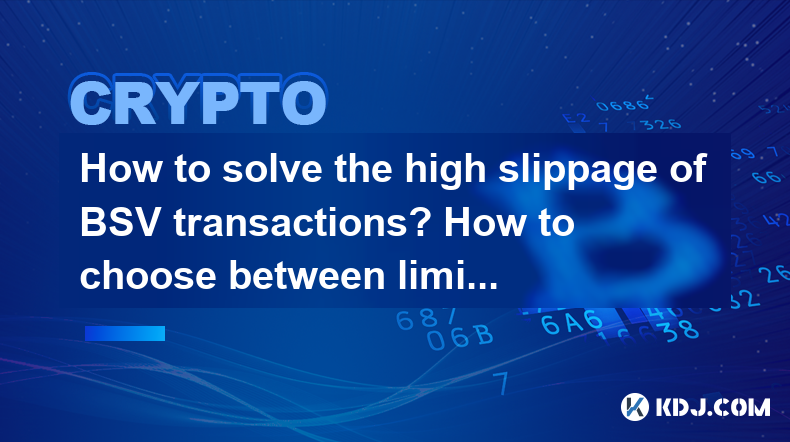
How to solve the high slippage of BSV transactions? How to choose between limit and market orders?
May 02,2025 at 09:01pm
High slippage can be a significant concern for traders dealing with Bitcoin SV (BSV) transactions. Slippage refers to the difference between the expected price of a trade and the price at which the trade is actually executed. This can occur in fast-moving markets or when there is low liquidity. To address this issue, understanding the mechanics of slipp...

What if BSV transactions are frozen? How to contact customer service to unblock the account?
May 05,2025 at 05:01am
When dealing with Bitcoin SV (BSV) transactions, encountering issues such as frozen transactions can be a stressful experience. This article will guide you through the process of understanding why BSV transactions might be frozen and how to contact customer service to unblock your account. We will cover the reasons behind frozen transactions, steps to t...
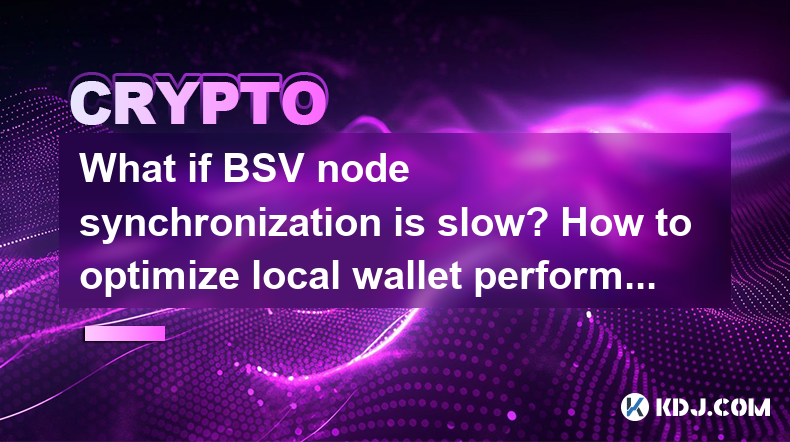
What if BSV node synchronization is slow? How to optimize local wallet performance?
May 03,2025 at 04:35pm
When dealing with BSV (Bitcoin SV) node synchronization and optimizing local wallet performance, it's crucial to understand the underlying issues and implement effective solutions. Slow synchronization and poor wallet performance can significantly hinder your experience with the BSV network. This article will delve into the reasons behind slow BSV node ...
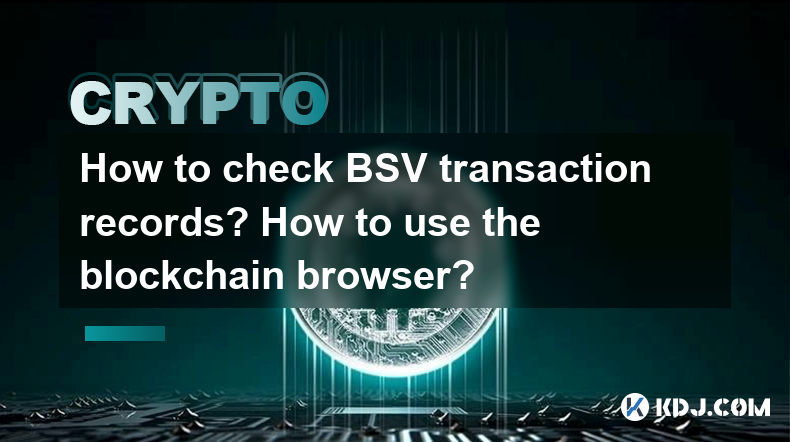
How to check BSV transaction records? How to use the blockchain browser?
May 03,2025 at 06:50am
Checking BSV (Bitcoin SV) transaction records and using a blockchain browser are essential skills for anyone involved in the cryptocurrency space. These tools allow you to verify transactions, check wallet balances, and understand the flow of funds on the blockchain. This article will guide you through the process of checking BSV transaction records and...

BSV transaction fees suddenly increased? How to adjust the handling fee to save costs?
May 02,2025 at 06:42am
Understanding BSV Transaction FeesBSV (Bitcoin SV) aims to fulfill the original vision of Bitcoin as a peer-to-peer electronic cash system. One of the key elements in this system is the transaction fee, which compensates miners for including transactions in the blockchain. Recently, users have noticed a sudden increase in BSV transaction fees, which can...

Does BSV transaction require real-name authentication? Is anonymous trading feasible?
May 03,2025 at 03:14pm
The question of whether BSV (Bitcoin SV) transactions require real-name authentication and whether anonymous trading is feasible is a complex one, deeply intertwined with the broader dynamics of cryptocurrency regulations and blockchain technology. Let's delve into these aspects to provide a comprehensive understanding. Understanding BSV and Its Transac...

How to solve the high slippage of BSV transactions? How to choose between limit and market orders?
May 02,2025 at 09:01pm
High slippage can be a significant concern for traders dealing with Bitcoin SV (BSV) transactions. Slippage refers to the difference between the expected price of a trade and the price at which the trade is actually executed. This can occur in fast-moving markets or when there is low liquidity. To address this issue, understanding the mechanics of slipp...

What if BSV transactions are frozen? How to contact customer service to unblock the account?
May 05,2025 at 05:01am
When dealing with Bitcoin SV (BSV) transactions, encountering issues such as frozen transactions can be a stressful experience. This article will guide you through the process of understanding why BSV transactions might be frozen and how to contact customer service to unblock your account. We will cover the reasons behind frozen transactions, steps to t...

What if BSV node synchronization is slow? How to optimize local wallet performance?
May 03,2025 at 04:35pm
When dealing with BSV (Bitcoin SV) node synchronization and optimizing local wallet performance, it's crucial to understand the underlying issues and implement effective solutions. Slow synchronization and poor wallet performance can significantly hinder your experience with the BSV network. This article will delve into the reasons behind slow BSV node ...

How to check BSV transaction records? How to use the blockchain browser?
May 03,2025 at 06:50am
Checking BSV (Bitcoin SV) transaction records and using a blockchain browser are essential skills for anyone involved in the cryptocurrency space. These tools allow you to verify transactions, check wallet balances, and understand the flow of funds on the blockchain. This article will guide you through the process of checking BSV transaction records and...
See all articles




















































































